Electric guitar distortion
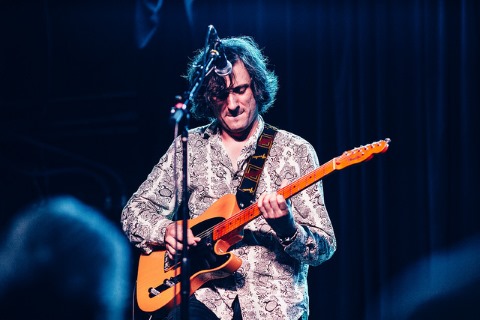
The other day I asked on Google+ if someone could make an audio clip for me and Dave Jacoby graciously volunteered. I wanted a simple chord on an electric guitar played with varying levels of distortion. Dave describes the process of making the recording as
Fender Telecaster -> EHX LPB clean boost -> Washburn Soloist Distortion (when engaged) -> Fender Frontman 25R amplifier -> iPhone
Let's look at the Fourier spectrum at four places in the recording: single note and chord, clean and distorted. These are a 0:02, 0:08, 0:39, and 0:43.
http://www.johndcook.com/DaveJacoby.wavPower spectraThe first note, without distortion, has most of it's spectrum concentrated at 220 Hz, the A below middle C.
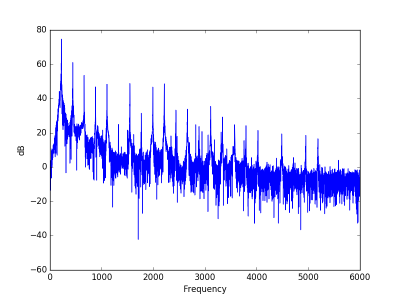
The same note with distortion has a power spectrum that decays much slow, i.e. the sound has more high frequency components.
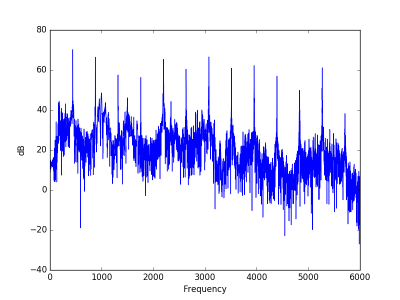
Here's the A major chord without distortion. Note that since the threshold of hearing is around 20 dB, most of the noise components are inaudible.
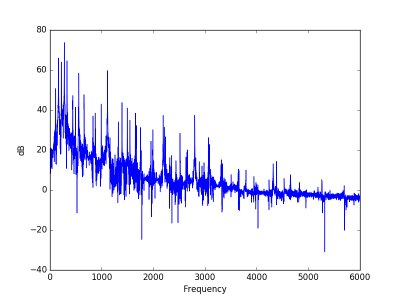
Here's the same chord with distortion. Notice there's much more noise in the audible range.
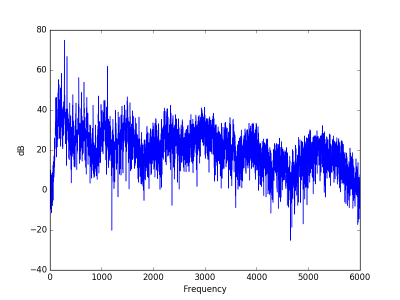
Update: See the next post an analysis of the loudness and sharpness of the audio samples in this post.
Photo via Brian Roberts CC
Related posts